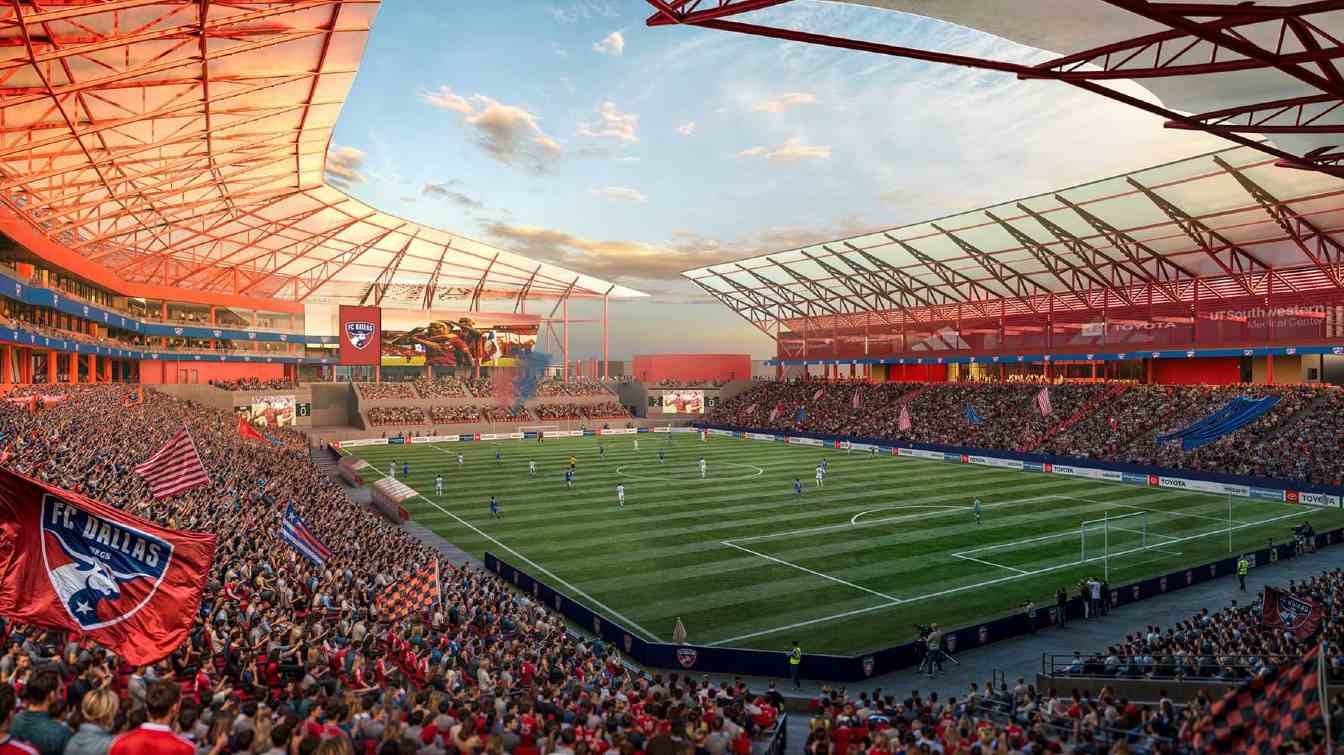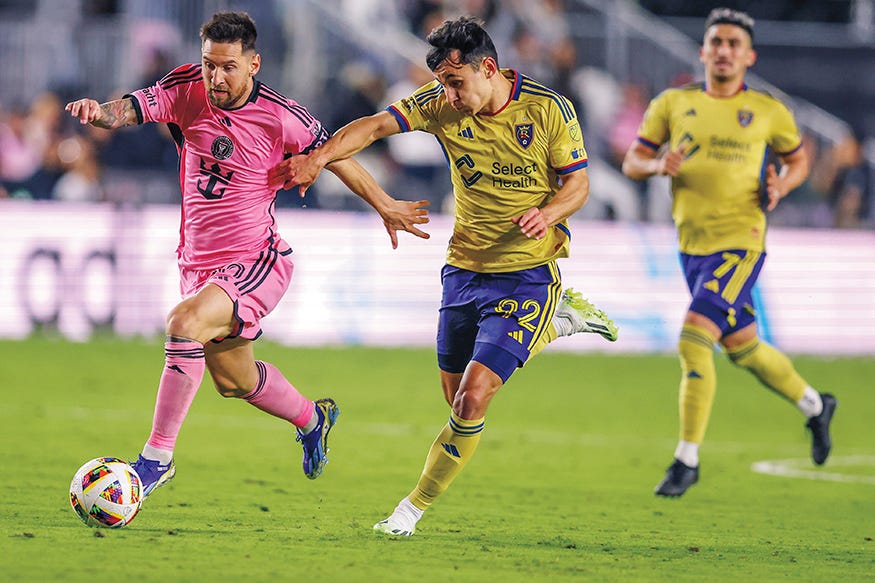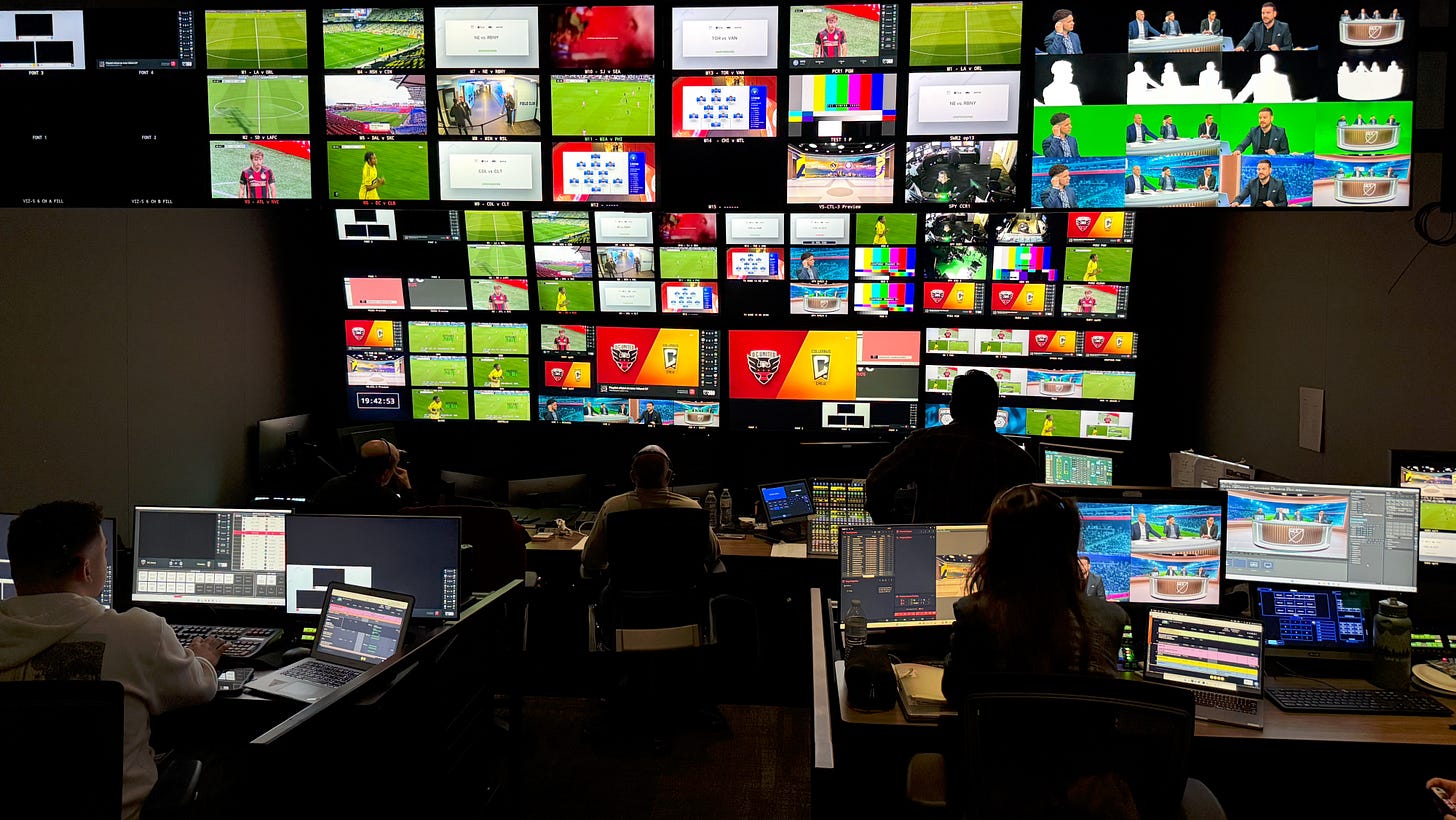📈 Upside Special Report: MLS Calendar Alignment - Pros and Cons, Impact, Recommendations for Teams and Practitioners
Major League Soccer’s decision to adopt a July-to-May schedule beginning with the 2027–28 season represents one of the league’s most transformative strategic shifts. For nearly 30 years, MLS operated on a February–December calendar that reflected the practicalities of American sports: avoiding brutal winter weather, managing stadium-sharing with NFL and college programs, and carving out its own identity in a crowded sports marketplace. However, as MLS becomes more globally connected—through player transfers, youth development, international tournaments, and rising global attention—the misalignment with world football’s calendar became an increasing constraint.
The league’s evolution in recent years shows why the timing of this shift matters. MLS has been on a steep upward trajectory, including:
Record-breaking expansion fees, demonstrating unprecedented investor confidence and league momentum (clubs like San Diego entering at $500M signal a maturing, globally relevant league)
Rising franchise valuations, with multiple clubs now valued at over $1B
(a strong sign that MLS has outgrown its early developmental phase)Global exposure boosted by Lionel Messi, whose arrival has elevated MLS’s visibility and attracted international audiences that previously overlooked the league
Major investments in academies, sports science, and analytics, with clubs building infrastructures that mirror elite European models
Unprecedented attendance growth, with clubs like St. Louis, Atlanta, Cincinnati, and Charlotte drawing top-tier global numbers
A decade-long partnership with Apple, giving MLS a global streaming platform and consistent storytelling window
Growing influence in the transfer market, particularly in the development and export of young talent to Europe
With the 2026 World Cup approaching and the world’s eyes shifting toward North American soccer, MLS is taking a step aimed at long-term competitive legitimacy: operating on the same football clock as the rest of the world.
The New Changes
Season Timing
The first full season under the new model will run from July 2027 to May 2028.
This shifts MLS into the global football rhythm, matching the competition cycles of major leagues like the Premier League, La Liga, Serie A, and the Bundesliga. Aligning season timing simplifies international competitions, creates smoother transfer movement, and allows MLS to meaningfully compare itself to—and compete with—global peers.
Winter Break
A winter pause from mid-December to early February ensures that no league matches occur during the coldest part of the year.
This helps preserve match quality and reduces injury risk. Northern clubs like Minnesota, Chicago, Colorado, and Toronto often suffer from harsh conditions that disrupt player performance and reduce fan turnout.Clubs may use the break for warm-weather training camps, mirroring practices used in Europe where teams travel to Spain, Portugal, Qatar, or North Africa to reset mid-season, refine tactics, and build fitness before the late-season push.
Younger players may be loaned out for short-term developmental opportunities, giving prospects meaningful minutes in competitive environments without conflicting with the MLS schedule.
The break helps reduce performance dips caused by severe weather, leveling the playing field and creating a more consistent quality of play throughout the year.
It aligns MLS with leagues like the Bundesliga, which have used winter breaks strategically for decades to protect player performance and maintain competitive balance.
Transition Season (February–May 2027)
A one-off 14-game transitional season will reorient the league’s operations.
This minimizes disruption to club operations while resetting the timing of scouting calendars, player conditioning cycles, and preseason rhythms.It gives technical staff, broadcasters, and commercial partners time to adapt to the new yearly structure without overwhelming operational systems.
Playoffs
The MLS Cup Playoffs move to late May.
This strategically places the league’s showcase event:after most domestic leagues have ended,
before major international tournaments begin in June,
and before the FIFA international window, giving playoff matches a clean window with fewer player absences.
This new window enhances visibility, giving the league’s biggest moment a primetime calendar opening without competing against NFL, MLB postseason, or college football.
Underlying Strategic Goals
Global calendar alignment, ensuring MLS operates on the same timeline as the world’s major leagues
Improved international competitiveness through better timing for player conditioning and tournament preparation
Better synchronization with the transfer market, raising player valuations and simplifying movement
Enhanced fan engagement, with improved match quality and more intuitive scheduling
Reduced competition with NFL and college football, two powerhouses that dominate fall sports windows
Impact on MLS and Player Performance
A. Improved Physical Preparation for International Tournaments
MLS has historically entered continental competitions like the Concacaf Champions Cup while still in preseason form, creating a competitive disadvantage.
With the new timing, MLS teams will be in mid-season rhythm—fitter, sharper, and more tactically cohesive.
This dramatically increases MLS’s potential to win continental trophies and represent the league well in Club World Cup tournaments.
B. Optimized Periodization
Performance directors and sports scientists have long wanted a calendar that mirrors global periodization models.
This structure provides:
a defined summer preseason for building fitness
a mid-season recovery window during the winter break
a structured ramp-up toward playoffs during the spring
The result is better load management and reduced risk of overuse injuries.
C. Health and Injury Prevention
The winter break gives players a meaningful recovery window that MLS has never had.
Players avoid the all-year grind, reducing the incidence of stress injuries, fatigue-related muscular issues, and cognitive burnout.
Teams will also be able to use the break for individual performance testing and customized development programs.
D. Better Weather for High-Performance Matches
The new schedule emphasizes matches in spring and fall, offering cooler temperatures that support higher-intensity play.
Heat stress—often a major issue in July and August—will impact fewer matches, improving sprint output, decision-making, and tactical precision.
E. More Seamless Player Transfers
Players coming from Europe will join MLS at the natural beginning of the season, not midstream.
Outgoing MLS players will be sold during peak European buying windows—when they are already match-fit and in full rhythm—raising their transfer value.
This strengthens MLS’s role as a credible talent development league.
Potential Economic Impact
A. Increased Broadcast Value
The Apple partnership becomes significantly more valuable under this structure.
Broadcasting matches during global football’s natural competitive cycle increases discoverability and viewership.
With reduced overlap from NFL and college football, MLS can command more attention and negotiate stronger long-term media valuation.
B. Enhanced Matchday Revenue
Northern clubs face fewer empty stadiums due to cold-weather games.
Fans are more likely to return during predictable mild-weather periods, driving higher ticket sales and in-stadium spending.
Premium hospitality sales rise with improved conditions and better-aligned high-stakes fixtures.
C. Higher Transfer Revenue
MLS clubs now sell players when the global transfer market is at full activity, rather than in off-peak windows.
This means:
more scouts present
more bidding competition
players in better form
higher valuations
Over time, this could significantly shift MLS club financial models toward transfer-driven profitability.
D. Sponsorship Value Increases
Brands prefer leagues operating on predictable global cycles.
Campaigns can be coordinated across multiple football markets, increasing the value of integrated marketing.
Sponsorship renewal windows become easier to synchronize with global sports budgets.
E. Stadium and Infrastructure Investments
Winter breaks will push clubs to invest in:
heated pitches
modernized training centers
sports science hubs
covered or partially enclosed facilities
These improvements increase club valuations and elevate MLS infrastructure closer to European standards.
Pros and Cons of the Change
Pros
Global alignment with FIFA calendar improves credibility and integration.
Improved international competitiveness, especially in continental tournaments.
Better transfer market integration, enabling higher-value player movement.
Quality of play increases, with optimal weather windows and structured rest periods.
Enhanced fan experience, with fewer cold-weather matches and better event timing.
Strategic winter rest for recovery, reducing injuries and fatigue.
Reduced overlap with NFL, opening clearer national broadcast windows.
Playoffs gain a higher-visibility window, helping MLS Cup break through.
Easier scheduling for international players, reducing interruptions from FIFA windows.
A stronger commercial platform, helping the league compete globally.
Cons
Weather challenges in northern markets remain a factor, especially in February and March.
Stadium conflicts for shared venues may increase scheduling complexity.
Operational complexity during the transition season, requiring adjustment in front-office workflows.
Youth and academy realignment, as MLS NEXT and MLS NEXT Pro must sync with global models.
Fan culture shift, as the league moves away from the long-standing “spring kickoff.”
Possible increased travel costs, especially during winter months.
Potential interruption of marketing momentum during the winter break.
How This Could Help MLS Become a Top 5 League in the World
MLS’s stated ambition to become one of the world’s top leagues hinges on credibility, competitiveness, and global integration. This calendar shift accelerates all three.
A. Player Recruitment Advantages
Top players want leagues with predictable rhythms and alignment with global cycles.
Synchronizing the season removes a major friction point that discouraged European stars from joining MLS mid-career.
B. Youth Development Enhancements
MLS academies can now align scouting, training cycles, and tournament participation with global standards.
Young players gain clearer pathways for European loans, development opportunities, and national team integration.
C. International Competition Success
MLS must begin consistently winning continental competitions to be seen as elite.
Entering these tournaments fully fit and cohesive makes success far more attainable.
D. Better Scouting Integration
European clubs can evaluate MLS talent at peak performance rather than in early preseason.
This improves the visibility and perceived quality of MLS-developed talent.
E. Improved Global Broadcasting Relationships
A globally intuitive calendar makes MLS easier to program, promote, and distribute internationally.
This strengthens long-term global fan acquisition.
Potential Impact on Tech Providers
A. Sports Performance & Wearable Tech
Companies will need to recalibrate analytics and risk models based on new seasonal patterns.
Longer competitive cycles, winter breaks, and summer preseasons require new algorithms and new product features.
B. Health, Recovery & MedTech Companies
Winter break and extended preseason cycles create new windows for testing, recovery, and performance enhancement.
Tech companies can introduce new protocols and tools designed for mid-season reset periods.
C. Fan and Commercial Tech Platforms
Engagement platforms must adjust to new rhythms of content, marketing windows, and matchday peaks.
AR/VR, dynamic ticketing, and fan analytics companies will benefit from smoother scheduling.
D. Data & AI Platforms
New models must be built to reflect:
earlier preseasons
longer competitive windows
midseason rest periods
adjusted transfer cycles
These changes create opportunities for innovation and differentiation.
Potential Impact on MLS Practitioners
The shift to a summer-to-spring calendar will profoundly affect the day-to-day work of MLS practitioners across performance, sports science, medical, coaching, analytics, operations, and player development. This is not simply a scheduling change—it represents a full recalibration of how professionals across the league plan, prepare, manage workload, and make decisions.
Greater Demands on Periodization and Load Management
Practitioners will now be responsible for designing performance cycles that align with global timing rather than the traditional American sports rhythm. This means creating summer-based preseasons that mirror Europe, integrating a mid-season recovery block during the winter break, and ensuring peak performance in late spring for playoffs. For strength coaches and sports scientists, the challenge becomes balancing conditioning, match load, and recovery over a longer and more complex competitive cycle.Increased Integration With Transfer Windows
Because incoming and outgoing transfers will now align perfectly with global windows, practitioners—from sports scientists to medical staff—must deliver more precise evaluations and onboarding plans. New signings arriving in July must be match-ready quickly. Outgoing players must be maintained at peak condition to maximize transfer value. Medical teams will also face higher scrutiny in pre-transfer physicals and injury history reporting.More Complex Injury Prevention and Recovery Planning
The winter break fundamentally changes the injury landscape. Practitioners will need to implement structured rest-and-rebuild programs for players during January, followed by careful reintegration in early February. Travel, climate shifts, and different playing conditions during fall and spring may also influence injury patterns. This new rhythm requires better predictive analytics, deeper medical collaboration, and stronger alignment across departments.Enhanced Collaboration Across Departments
The calendar change makes cross-functional coordination more important than ever. Practitioners must align performance planning with coaching strategies, analytics models, medical timelines, and operational constraints such as stadium availability. Departments that previously operated in silos must now become tightly integrated to avoid mismatches in schedule load, player readiness, and competitive demands.Increased Use of Technology and Data
The new season structure will lead to higher reliance on real-time analytics, wearables, GPS systems, recovery data, and biomechanical platforms. Practitioners must adapt existing models to new seasonal baselines, account for winter break conditioning fluctuations, and build new predictive frameworks. Those comfortable with integrating AI-driven platforms (e.g., injury prediction, load optimization) will play a significant strategic role in roster and performance decisions.Shifts in Travel, Climate, and Environmental Planning
Fall and early-spring travel during colder months will require practitioners to consider new variables: altered warm-up routines, environmental adaptations, hydration needs, and recovery from harsh-weather matches. This adds operational complexity and demands updated protocols to keep players physically and mentally prepared for varying conditions.More Demanding Player Communication and Education
With a new competitive flow, practitioners will spend more time educating players on how to manage their bodies during transitions—especially during the winter break. Players must learn to avoid detraining, maintain nutrition standards, and balance rest with workload during January. Practitioners become central figures in shaping these behaviors.Expanded Role in Long-Term Player Development Pathways
Aligning the calendar with Europe improves loan options, academy integration, and the timing of player exposure to international scouts. Practitioners will now play a larger role in evaluating when young players are ready for loans, managing their workload before potential transfers, and ensuring they develop within globally aligned timelines.
What Is Coming Next
Here are the areas MLS is likely to evolve next:
Roster Rule Modernization
Expect discussions around raising salary caps, adjusting the DP rule, expanding U22 slots, and enabling greater global flexibility.Strategic Expansion
Expansion may accelerate into both cold-weather and warm-weather markets, with improved infrastructure enabling year-round reliability.Greater Global Partnerships
MLS will deepen ties with European clubs, launch new cross-continental tournaments, and explore joint academies and tech partnerships.Integration with MLS NEXT & MLS NEXT Pro
Youth and developmental leagues will shift to reflect global training and scouting calendars.New Commercial Strategies
Expect new sponsor categories, expanded digital content, and deeper integrations with Apple’s platforms.Rising Wage Structures
As competitiveness rises, MLS may gradually evolve toward more open spending models similar to global leagues.
Recommendations for MLS Teams
Redesign Periodization and Performance Planning
MLS clubs must overhaul their training cycles to match the new July–May season structure. The addition of a winter break changes the flow of fitness progression, match load, and recovery. Teams should plan macrocycles that peak in late spring—when playoffs now occur—while ensuring players don’t lose conditioning during the January pause. This includes creating re-entry protocols, optimizing preseason timing, and adjusting intensity around congested fixture periods.Strengthen Transfer-Market Strategy
With MLS now aligned to global transfer windows, clubs must adopt more aggressive and data-driven recruitment models. Teams should expand international scouting networks, modernize their analytics infrastructure, and refine their evaluation frameworks. This positioning enables MLS clubs to buy and sell players at optimal times, maximize value, and compete for talent on the world stage. Clubs that treat recruitment as a continuous, global process—not a seasonal task—will benefit most.Enhance Fan Engagement During New Seasonal Rhythms
Cold-weather markets will face attendance challenges in late fall and early spring, requiring creative game-day programming and improved fan amenities. The winter break also becomes an opportunity to maintain fan interest through content and community engagement rather than going silent. Clubs should plan January as a “storytelling month,” using behind-the-scenes content, academy features, and brand campaigns to sustain momentum.Upgrade Sports Science and Technology Infrastructure
A longer, globally aligned season demands improved monitoring and recovery systems. Teams should invest in elite-level wearable technology, GPS tracking, biomechanical platforms, and recovery tools. The winter break is an ideal window for full medical assessments, performance audits, and individualized development plans. Integrating data from performance, medical, coaching, and analytics departments will ensure better decision-making throughout the season.Prepare Stadium Operations and Logistics for Seasonal Shifts
Weather conditions will affect matchday operations differently under the new schedule, especially for northern clubs. Teams should reassess heating capabilities, field maintenance plans, staffing schedules, and fan comfort strategies. Enhancing indoor hospitality spaces, creating flexible season-ticket options, and adjusting matchday staffing models will be essential to maintaining high-quality fan experiences.Realign Academy, MLS NEXT, and MLS NEXT Pro Calendars
Youth development systems must synchronize with the new first-team schedule. This includes adjusting academy competitions, aligning MLS NEXT Pro’s season for smoother player movement, and creating clearer development pathways. By matching international youth tournament cycles, MLS academies can better prepare prospects for European opportunities and senior competition readiness.Strengthen Internal Cross-Department Planning
The calendar shift touches every part of an organization—from marketing to operations to performance. Clubs should create internal transition committees to ensure all departments are synchronized. Updating preseason travel, international partnerships, staffing budgets, content calendars, and commercial planning will help avoid disruption. Teams that treat this shift as a holistic organizational modernization effort will be best positioned long-term.
Conclusion
MLS’s shift to a summer-to-spring calendar is far more than a logistical adjustment. It is a wholesale reengineering of the league’s competitive and commercial identity. The new format elevates player performance, enhances match quality, raises economic potential, unlocks more efficient player movement, and positions MLS in closer alignment with global football norms.
Challenges will surface—especially in cold-weather environments and during the transition season—but the long-term upside is dramatic. With the World Cup approaching and attention on North American soccer at an all-time high, this scheduling change could become one of the most pivotal strategic decisions in MLS history.
The message is clear: MLS is no longer content to operate on the margins of global football. It intends to join the world’s elite—and this is a foundational step toward that ambition.
You may also like:
⭐⚽ Upside League Profile: MLS & Chat with Fred Lipka, MLS Vice President of Youth & Player Development.
MLS, One of the Most Popular Soccer Leagues in the World
🔥Upside Chat with Mike Messer (Nashville SC), Jason Han (Ex LAFC), Darcy Norman (Chicago Fire FC), Gavin Benjafield (LAFC) on Strategies During the MLS Playoffs & Offseason, 2026 Soccer World Cup.
This week we have the honor to interview again a group of sports performance executives to talk about the latest trends in the world of sports performance and rehabilitation.
🔥Upside Chat with Mike Messer (Nashville SC / MLS), Rick Cost (US Soccer), Jason Han (Ex LAFC / MLS)
This week we have the honor to interview again a group of sports performance executives to talk about the latest trends in the world of sports performance and rehabilitation.









